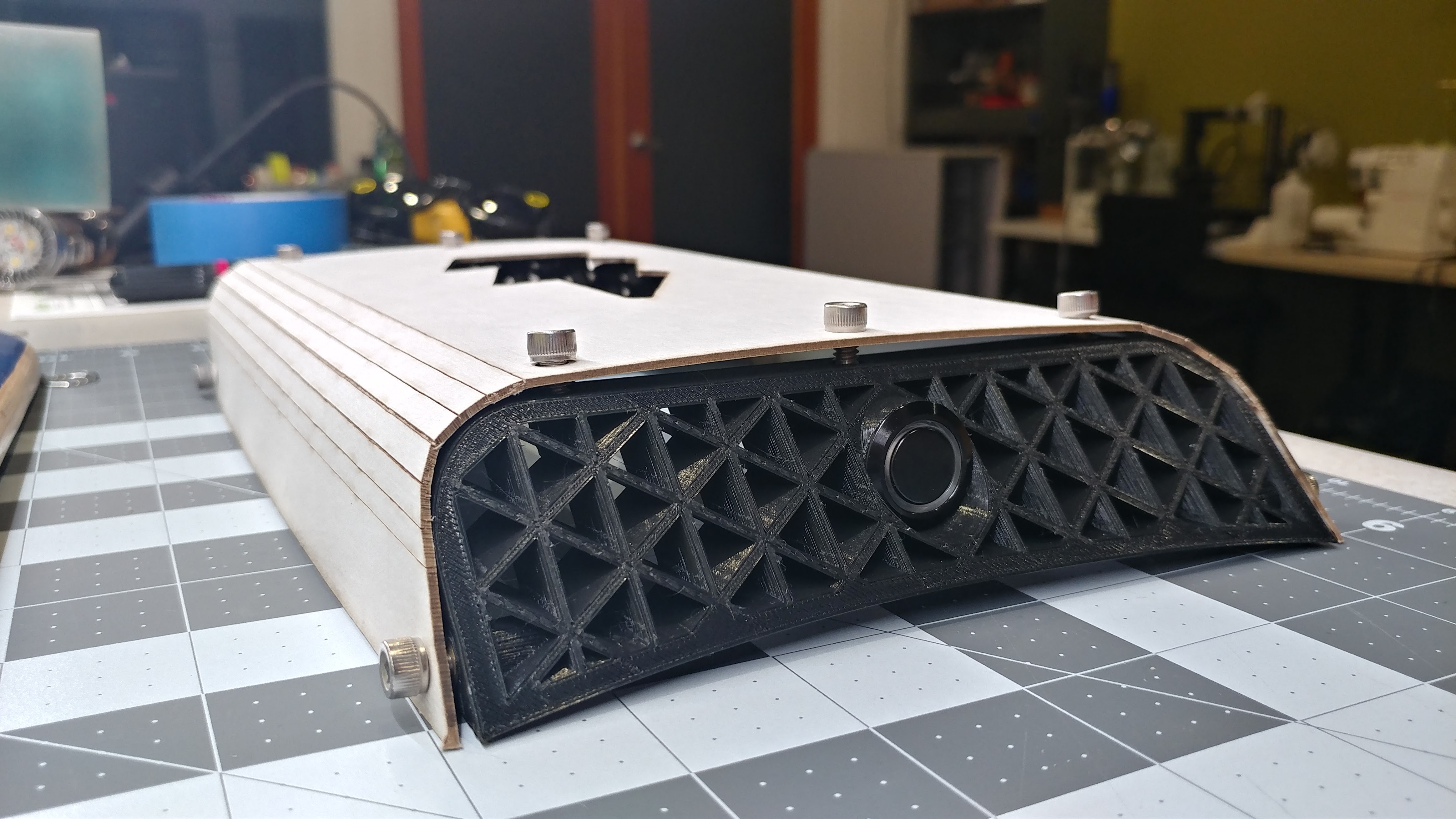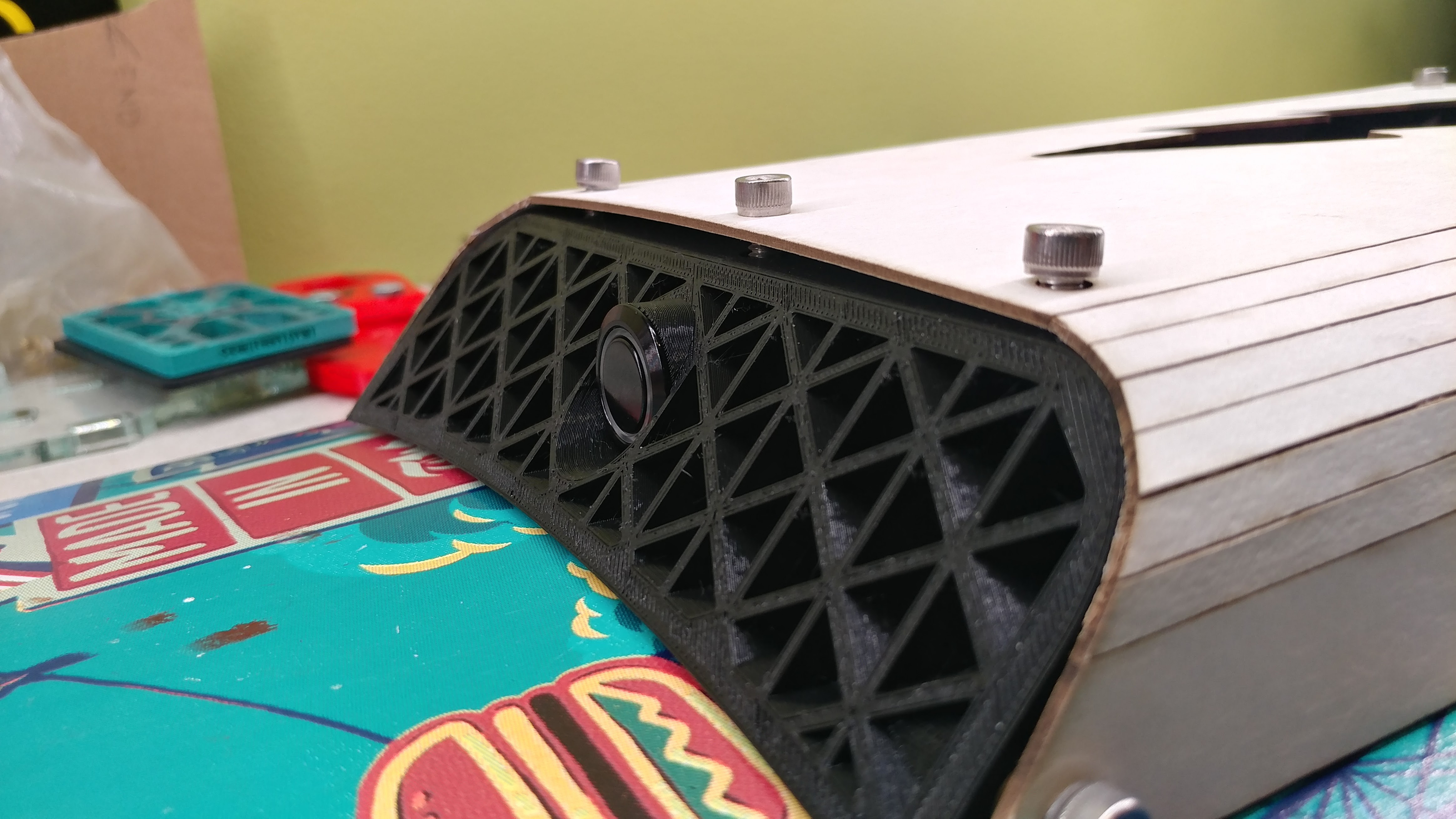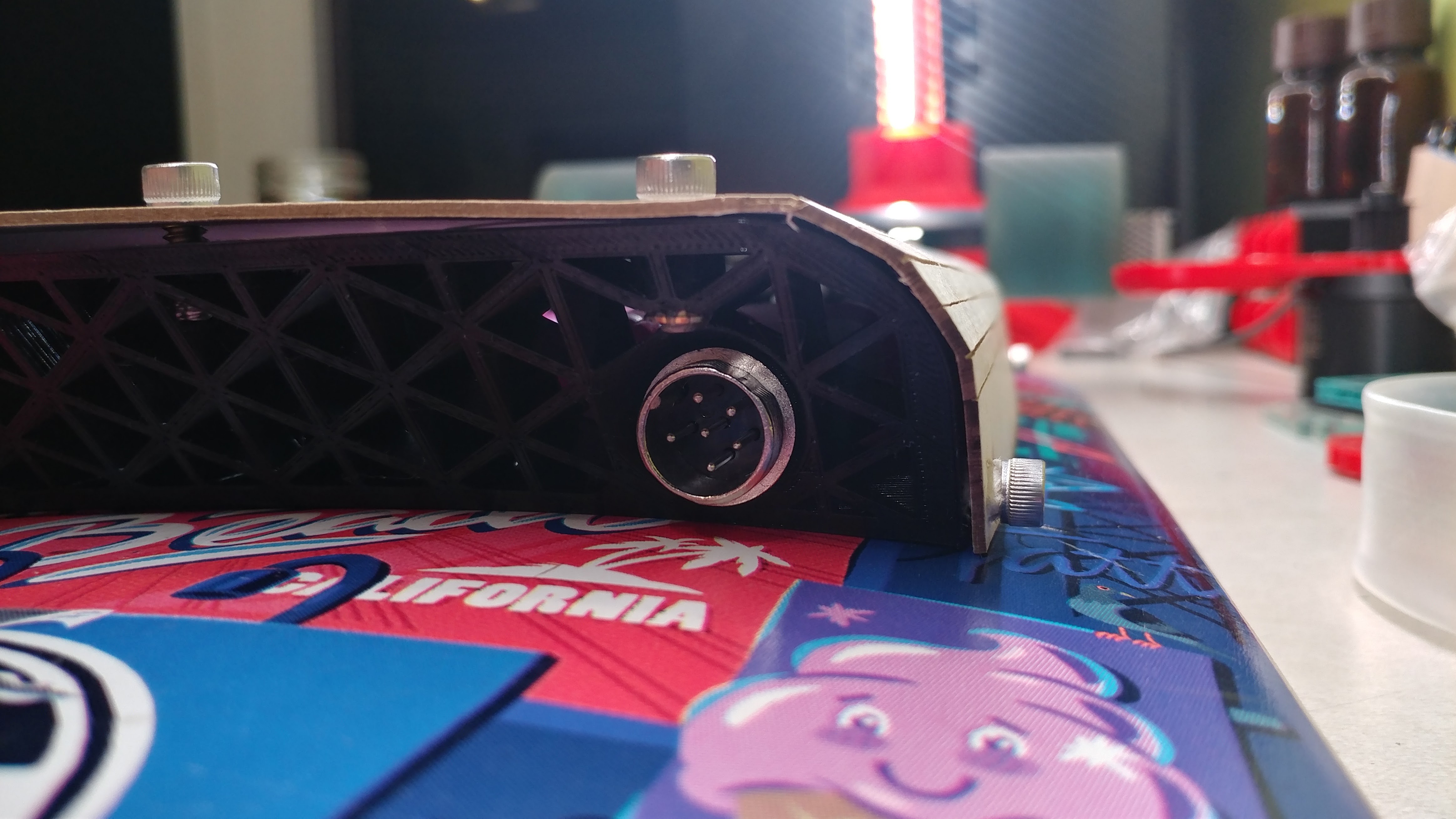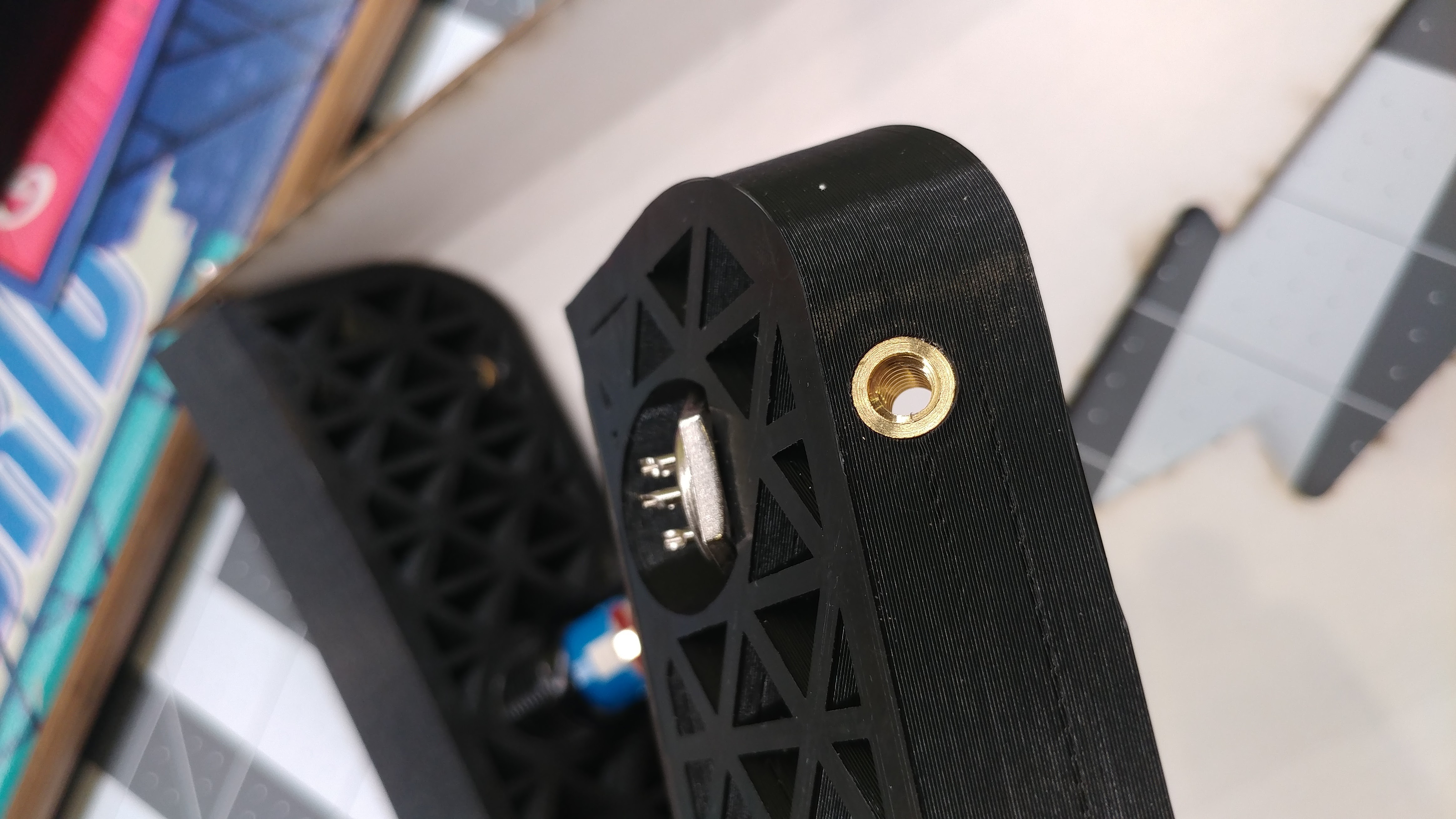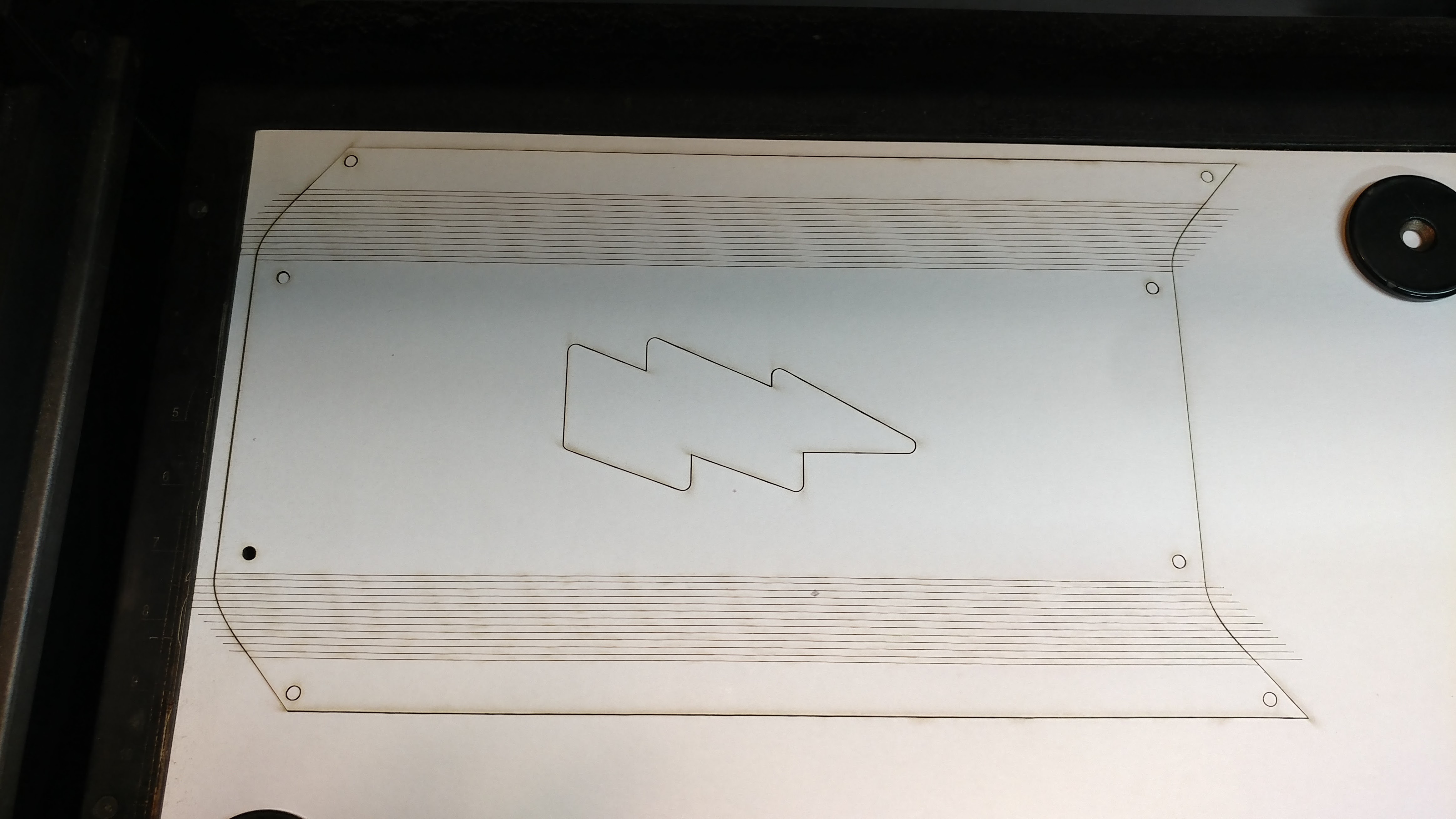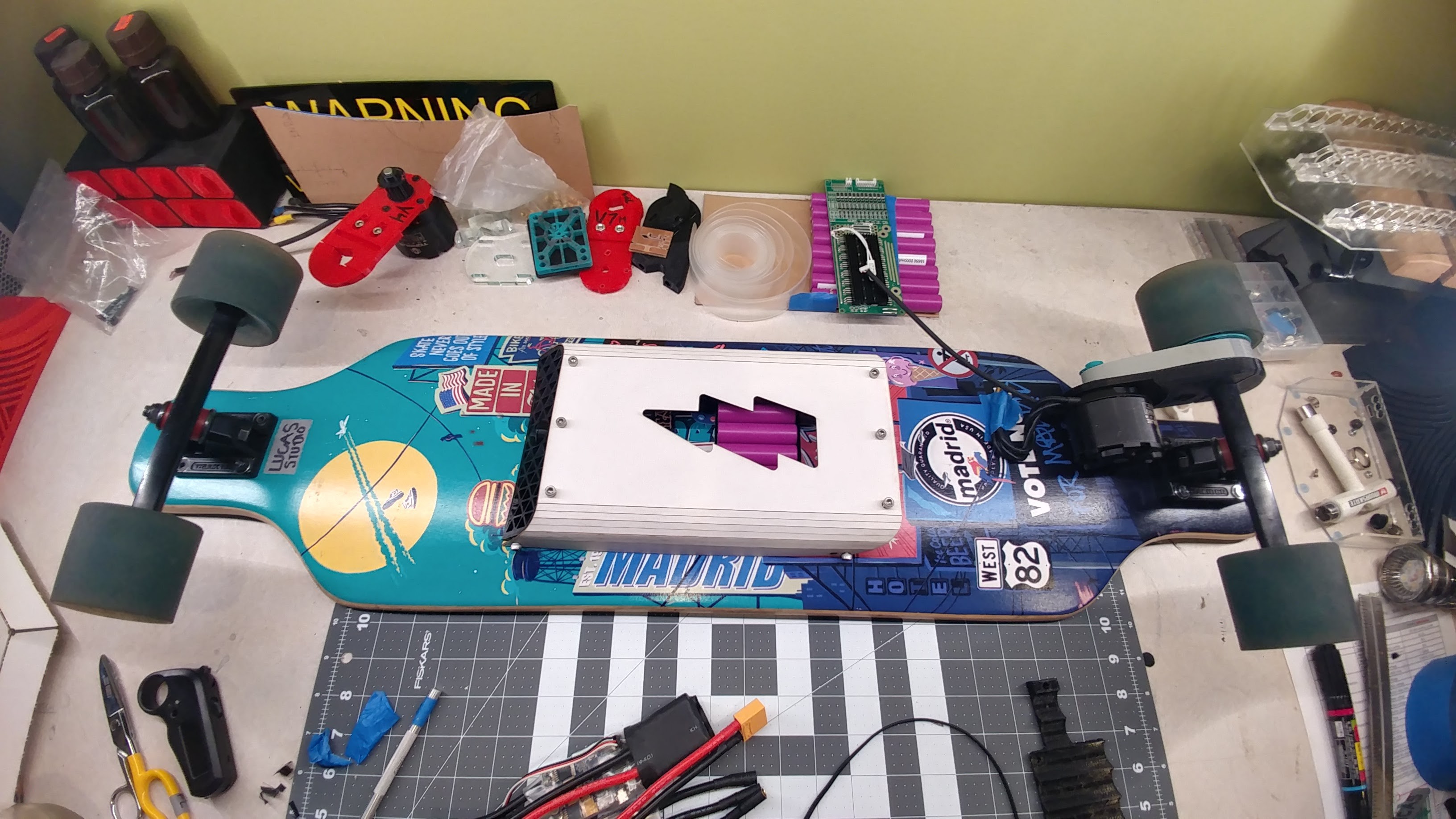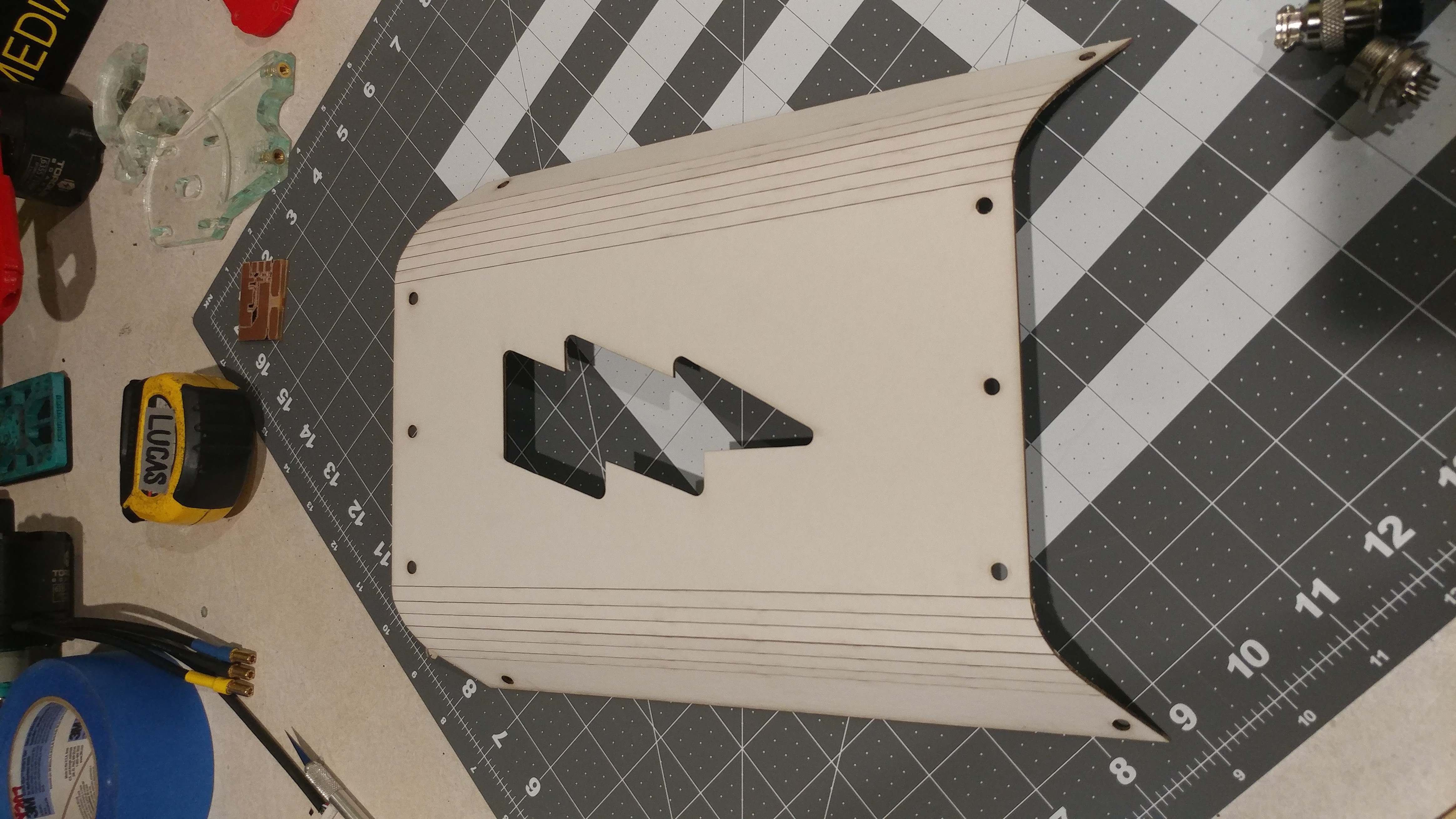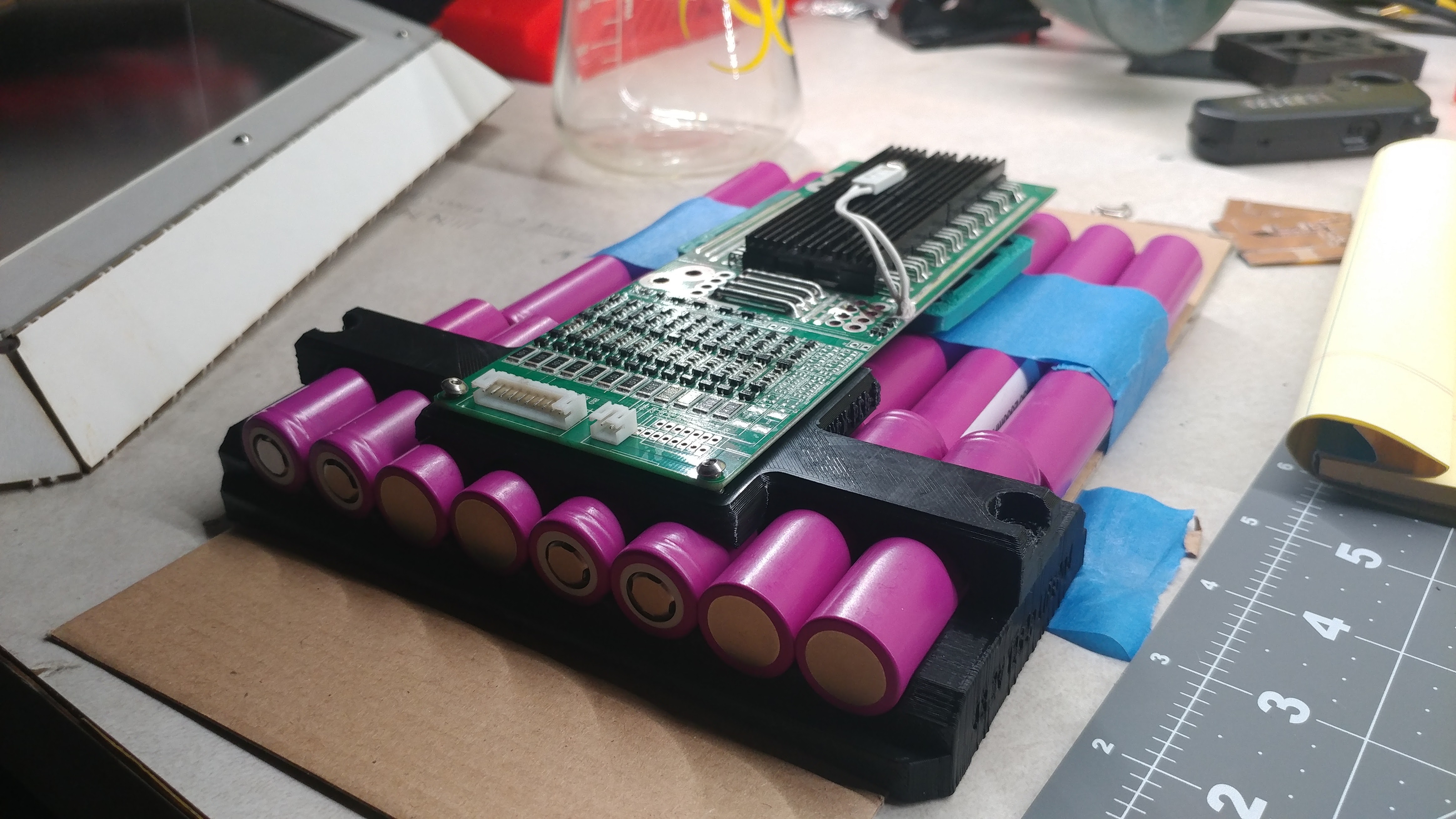-
Electronics Update.
09/20/2017 at 04:30 • 0 commentsPre-cursor: I don't know electronics very well. It blew my mind a couple years ago when I kind of learned how microcontrollers work. I'm learning all of this as I do it. It's one of the reasons I wanted to do this project. I'm still in the "connect a light bulb to the plus and the minus, and you get light!". Bare with me.
I wanted no compromises when it came to power. I thought I added a bit more from what people have built, but that's not the case. It's actually almost all compromises. I've divided it into a couple sections so I can understand it: Motors, ESCs, Batteries, BMS, Remote, and All Those Things I Forgot.
MOTORS:
After tons and tons of research, trying to match randomly sourced motors to what Boosted uses, I settled on safe choice. There are a lot of factors to take into consideration, like torque, speed, and voltage... and how that pushes/ pulls gear ratio, motor size, amperage pulled, and many other things. I decided that I don't have to do everything from scratch, so I looked at what others were using, and compared that to my own needs. This is what I decided upon.
PROS
- I think 190kv is a mid-ground in torque, with e-board motors ranging from 140kv - 260kv. General rule of thumb says that the lower the number, the more torque you have, but the slower you go.
- My 12s battery meets the maximum possible voltage.
- It's just skinny enough to fit two of these suckers on one truck.
- Long enough shaft to fit a 16mm wide belt
- SENSORED!! (more starting-from-stop torque)
CONS
- The 8mm shaft diameter is harder to find low teeth count gears for. Might have to drill some out.
- It's pretty large in diameter. I'm having to move quite a bit around to fit them.
- Expensive
![]()
ELECTRONIC SPEED CONTROLLERS:
The natural choice when surfing every e-board website, forum, or blog was any derivative of Benjamin Vedder's ESC. This guy built the thing just for us fools who want to kill ourselves on a motorized piece of wood. Plus they had em on sale when I bought the motors
PROS
- Start from stop capability
- Sensored motor compatability
- High amperage limit
- Regenerative braking
- Customization of every setting imaginable
- UART Communication when my programming skills improve
CONS
- Expensive
- Not perfect, 100% reliable, or plug and play,
- Customization of every setting imaginable
- Terrible GUI at best
![]()
BATTERIES
I wanted to learn everything from this project.. so why not learn how to weld batteries? Only if it was that easy. This was quite a struggle, balancing the capacity, max amperage draw,and manufacturer... and how that effected the places I could buy them, the amount I needed, who to trust, and how to charge them. I can only wish that I got this right.
x2 12s2p 18650 Battery Packs
Yeah, let me explain. 12s2p isn't nearly enough for TWO 190kv motors, but I was dumb and didn't calculate it all out. Basically, its 24 18650 cells in 2 parallel; meaning every two cells acts as one in voltage, but double it's capacity. Multiply that cell by 12, and you get the combined nominal voltage of 43.2 volts. Or, that's how I calculated it anyway.
I bought 50 LG Chem HD2 18650 cells, with the intention of making two 24 cell packs. I know, that means 2 BMS. My wallet knows that now. These cells have a nominal voltage of 3.6v with a 2000mAh capacity. What make these so expensive is their 25A continuous discharge. I hope that's enough. These are supposedly A-bin batteries, and only 6 months old, but we'll see.
![]()
BATTERY MANAGEMENT SYSTEM
So, until I started this project, I only knew that you had to use a special charger to charge lipo batteries. I've learned a lot about different batteries and chemistry, form factors, different voltages per state, and balancing. I still don't understand most of it, but this is what I've got.
I'm not really sure how I found these guys, but I was impressed with their catalog of options and actual datasheets. After a bit of back and forth, they recommended this model. After a sketchy paypal transaction and two worrisome weeks, they arrived. I'm mounting these to the top of the battery sled so the entire unit can be hot swapped.
![]()
REMOTE:
Ever since I saw some guy using a wireless wii mote as controller, I've really wanted to that. I love how people made a connector that connects to the controller out of a pcb, and how programmable it is. After seeing the lack of wireless remotes on the market, I changed my mind.
Torqueboards 2.4ghz Nano Remote
I saw this on the diyelectricskateboard site when I was shopping for the motors, and at the time, it was on sale. I would have had to wait for another order of wiimote adapters, and find a wiimote, so I just chose this thing.
![]()
ALL THOSE THINGS I FORGOT:
No-Spark Switch
Until a couple weeks ago, I didn't even think about how much amperage I was pulling, nor how that related to the switch. Honestly I imagined I was going to use some cheap LED switch off of amazon. Had I gone that route, It would probably either melt the switch, or weld it together. The best choice is the Vedder No-Spark switch, and man, there are so many versions and arguments about it. I thought his original design was straightforward enough, so I'm going to cut it on my PCB mill and use surface mount components. My roommate has quite the setup, so I think my tooling should be covered.
USB Control
I'm probably going to be making quite a few adjustments in the field, and I really don't want to pull the cover off every time. I'm going to use a surface mount a USB cable extender that plugs into the master VESC.
Charger
Yeah, totally forgot I have to charge the thing. Alibaba seems like the best selection of 43.2v chargers, but it certainly isn't in my comfort zone. We'll see how this turns out.
Plugs
Ok, I didn't really forget, but I did wait until now to think about it. I've found 6 pin aviation connectors on my stock of crap, and I did source MT60 connectors for the motors (I really like the shape). I need to choose a charging plug. I'm using 10 gauge wire for everything before the ESC, and 12 after it.
-
All About the Case.
09/20/2017 at 03:44 • 0 commentsHere's a little more detail on the case. I've been designing the whole thing in Autodesk Inventor, and exporting parts to the appropriate program/ method for fabrication. Man, I'm so happy to grow up in an age where I have access to a 3d printer, laser cutter, mill, and 3d modeling software.
The case consists of four major parts.
Front and Rear Vents, Shell, Battery Sled, and ESC Sled.
FRONT/ REAR VENTS
The front and rear vents are where most of the interface with the board actually happen. Button in the front, plugs in the back. It also hold the board together: I've melted threadserts into the top and sides to mount to the board and shell. These are also responsible for half of the board's aesthetics. It's not perfect, but it's a start.
![]()
![]()
![]()
![]()
![]()
SHELL
The shell is the protector from the ground, flying 25+ mph past it. Originally, I was going to 3d print the whole thing, but needed a material that was abrasive resistant, and could take a couple smacks. 3d prints like to catch, rip, and crack, if say, rough asphalt kissed the surface. I've designed it in Inventor Sheet Metal, and am planning to bend those 3/4" radii by hand... somehow. Right now it's mocked up with cardboard of a similar thickness.
![]()
![]()
![]()
BATTERY SLED
The battery sled has keep all those 18650s from floating around. Hot-Gluing heat-shrunk batteries to the curved desk didn't seem right to me, so I built this over-engineered battery sled. It allows for the batteries to be removed from the sled, leaves room for tabs when I weld them together, and mounts the BMS to the top to make the whole unit hot-swap-able. It too mounts to both the shell and the deck, to hopefully keep it all together. Or, fail harder.
![]()
![]()
ESC SLED
Same idea as the battery sled, but for the ESCs. This is actually pretty unnecessary, but I really like the idea of a board just as beautiful inside as out. It keeps things tidy, and also adds to the mounting system.
-
Off the shelf once again.
09/20/2017 at 03:17 • 0 commentsIt's been almost a year since I started this project. After doing quite a bit of research, buying everything, making initial designs, and hooking it all together for the first time, I finally got back to it-- finally. This will be my first post here, but certainly not the first pile of work that's been done on it.
Here's where I'm at.
CASE DESIGN:
This has been a task that I've been sitting on for a while. I finally think I settled on a method of encasement. After multiple prototypes, I think a bent aluminum case with 3d printed sleds and caps will result in the slimmest, most custom mounting solution possible. With the tools at hand, I think this will result in a case with aesthetics that are acceptable with enough room for future upgrade-ability and retrofitting once I realize I've forgotten something.
ELECTRONICS:
I've had motors, ESCs, batteries, BMS modules, and the remote for a while now, but haven't thought about connecting them together until now. I've found motor connectors, sensor plugs, on/off switch, and wire; I have yet to weld the battery together (or find a way to weld the batteries for that matter), finish building Vedder's no spark switch, or purchase a charger for the skateboard.
MOTOR MOUNT:
I think I've finally settled on a first-draft for the motor mount. Well, metal first-draft that is. I'm on version 9 right now, but this one's ready to get cut. This is when it's nice to work for a start-up: open access to the tormach. I had to put the trucks on 1/2" risers to get the motor low enough, which isn't ideal, but it will have to do for now. Hopefully there won't be any sag in the mount, because it's pretty tight to the board.
Over-powered, Over-priced Electric Longboard
It's another Electric Longboard Project, except harder, more expensive, way too powerful, but just how I want it.
 forrest.thelucas
forrest.thelucas




